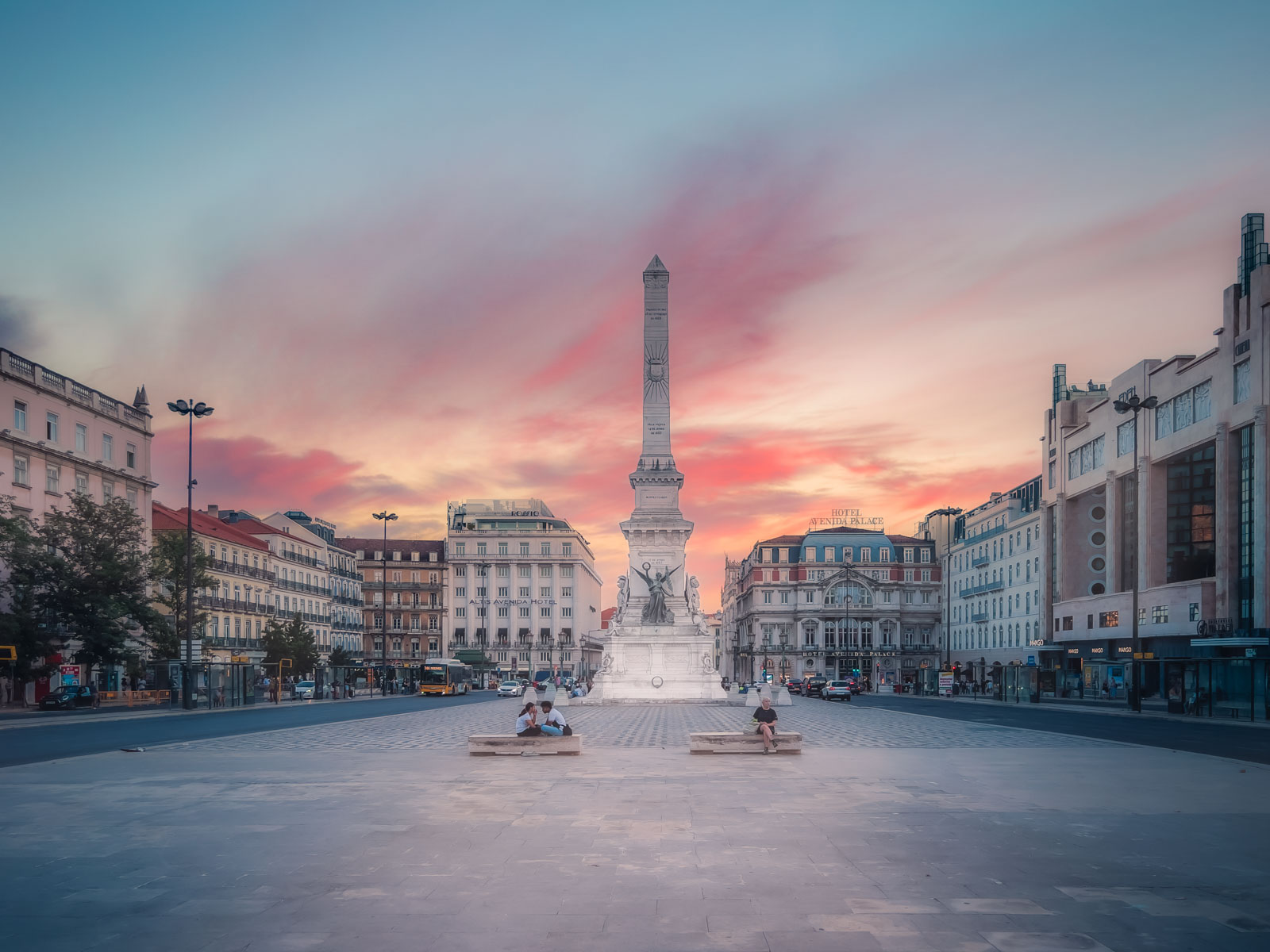23 Best Things to Do in Lisbon, Portugal In 2024
Discover the enchanting allure of Portugal’s capital city, with our ultimate guide to the best things to do in Lisbon. From the moment you set foot on its cobblestone streets, ... Continue Reading Read the original post 23 Best...

Discover the enchanting allure of Portugal’s capital city, with our ultimate guide to the best things to do in Lisbon. From the moment you set foot on its cobblestone streets, Lisbon invites you on a journey through history and culture. Explore the historic Belém district, where the monumental Jerónimos Monastery and the Tower of Belém are testaments to Portugal’s Age of Exploration. Wander through the narrow alleys of Alfama, the city’s oldest quarter, serenaded by the haunting melodies of Fado music. Indulge in the culinary delights of the Mercado da Ribeira, a food lover’s paradise, where the best of Portuguese cuisine awaits.
The Best Things to Do in Lisbon, Portugal
Lisbon’s charm doesn’t stop at its past. The city is alive with contemporary culture, from cutting-edge art galleries to chic rooftop bars offering panoramic views that will take your breath away. Adventure seekers will find solace in Lisbon’s surroundings, with Sintra’s mystical palaces and Cascais’ golden beaches just a short trip away.
1. Torre de Belém (Belém Tower)
One of the first places you should visit in Lisbon is the iconic Belem Tower or Torre de Belém. Built on the Northern Bank of the Tagus River, Belém Tower is a UNESCO World Heritage Site symbolizing Portugal’s maritime power.
Constructed in the early 16th century as a fortress to guard the entrance to Lisbon’s harbor, visitors are drawn to its ornate limestone façades, richly decorated with maritime motifs and historical figures, offering a glimpse into Portugal’s glorious past.
Inside, you can climb the ancient spiral staircases, explore the old cannons, and enjoy views of the Tagus River and the surrounding landscape.
The tower’s history as a point of departure for explorers and its role in defending the city make it a fascinating site for history buffs and architecture enthusiasts alike.
Belem Tower is typically open from Tuesday to Sunday, 10:00 AM to 5:30 PM (October to April) and until 6:30 PM (May to September). Admission costs €6 for adults and is free with the Lisbon Card.
2. Jerónimos Monastery
Located just a hop skip and a jump from Torre de Belém, Jerónimos Monastery is another UNESCO World Heritage site in the heart of Lisbon’s Belém district.
This building is a masterpiece of stunning beauty. Jerónimos Monastery was built in the 16th century to commemorate Vasco da Gama’s successful voyage to India. Vasco de Gama was the first European to reach India by sea.
His monument is a prime example of Manueline architecture, blending Gothic, Renaissance, and Moorish styles. Its intricate facades, cloisters, and the awe-inspiring interior of the church, where Vasco da Gama and other prominent Portuguese figures are entombed, make it a must-visit for history enthusiasts and architecture admirers.
The monastery is open to the public from Tuesday to Sunday, 10:00 AM to 5:30 PM in the winter months and until 6:30 PM during the summer, providing ample opportunity to explore its grandeur. The entrance fee is €10 for the monastery, with various discounts available for students, seniors, and families. Visitors can also enjoy free admission on the first Sunday of each month, making it accessible for everyone to witness the splendor of one of Lisbon’s most iconic landmarks.
You can book a timed entrance in advance and it is also free to enter with a Lisbon Card.
3. Pastel de Nata at Pastéis de Belém
Indulging in Pastel de Nata is a quintessential experience for any visitor to Lisbon, and if you are going to try it, the best place is just steps away from Jeronimos Monastery.
Pastéis de Belém is an iconic bakery that has been serving its secret recipe since 1837, and offers the original version of the creamy custard tart that has become a symbol of Portuguese culinary tradition. The history of these tarts dates back to the early 19th century, crafted by monks at the nearby monastery. As the monastery closed, the recipe was passed to the bakery, ensuring the legacy of this delicious treat.
Tourists flock here not just for the pastries but for a taste of history, witnessing the bustling atmosphere and the azulejo-covered walls that tell stories of the past.
Pastéis de Belém is open every day from 8:00 AM to 11:00 PM (or midnight during the summer), inviting visitors to enjoy these tarts fresh from the oven. The cost is remarkably affordable, with each tart priced at just over €1, making it a must-visit for a sweet taste of Lisbon’s culinary heritage without breaking the bank.
4. Padrão dos Descobrimentos – Monument to the Discoveries
Staying in the same neighborhood, the Padrão dos Descobrimentos (Monument to the Discoveries) is an imposing structure standing proudly over the Tagus River. Vasco da Gama may be Portugal’s most famous explorer. Still, the country has a history of discoveries and this is a powerful tribute to the explorers who ventured into unknown waters.
Located just a short walk along the water from Belem Tower, this striking monument is shaped like a ship’s prow and was inaugurated in 1960 to commemorate the 500th anniversary of the death of Prince Henry the Navigator, a key figure in the early days of the Portuguese Empire.
The monument showcases over thirty statues of historical figures who significant roles in the discoveries, including explorers, monarchs, cartographers, and scientists, all led by Prince Henry himself.
The Monument to the Discoveries is open from Tuesday to Sunday, 10:00 AM to 6:00 PM (March to September) and until 5:00 PM (October to February), with an entrance fee of approximately €6 for the viewpoint. This site not only offers a visual feast and a lesson in history but also a unique perspective on the daring spirit that propelled Portugal into the annals of global exploration.
5. Mercado de Ribiera (Time Out Market)
Located in the lively Mercado da Ribeira at Cais do Sodré, Mercado de Ribiera was transformed in 2014 by the team behind Time Out Lisboa magazine into a gastronomic haven, featuring a curated mix of over 40 spaces that includes some of Lisbon’s most renowned chefs and restaurants.
From traditional Portuguese dishes to contemporary fusion cuisine, the market provides an unparalleled opportunity to taste your way through the flavors of Lisbon.
It’s not just about food; there are also bars, shops, and frequently held cultural events, making it a dynamic hub of activity.
Open daily from 10:00 AM to midnight (and until 2:00 AM on weekends), the market welcomes visitors to explore its offerings. Entry to the Time Out Market is free, allowing you to budget according to what you eat or drink, making it a flexible option for tourists wanting to experience the best of Lisbon’s food scene without a hefty price tag.
6. Food Tour
If you really want to enjoy Portuguese food, a food tour is another option. The Portuguese are passionate about their food and we can attest that Portugal has great food. Take a food tour to enjoy the various ways to eat cod. There are 1001 ways to cook cod from from roasted cod to canned cod.
This food tour takes you through Central Lisbon to sample Portuguese cuisines while taking in the sights and walking through the Streets. You’ll visit Bairro Alto, Chiato, Rossio and Comércio
7. Tuk Tuk Tour
One of our favorite things to do in the Portuguese capital was to hop in a Tuk Tuk and tour. Tuk Tuks are all over the city and we hopped in one at the Miradouro das Portas do Sol. Tuk Tuks are lined all along the streets here and we negotiated a price of 40€ each for a 90-minute ride. It was a great way to see the top historic sights and miradors overlooking the city center.
Lisbon is known as the city of seven hills and taking a tuk-tuk tour was a fantastic way to get to the top of these lookout points quickly and easily without having to wait in line for elevators or trams.
8. See the City Center from one of Lisbon’s Many Mirador’s
As we mentioned, Lisbon is called the City of Seven Hills and one of the most popular things to do in Lisbon is to go up to one of its many views of the city for sunrise, and sunset or to simply gaze over the city centre at any time of day.
The viewpoints are called Miradors, and we visited many during our day exploring on a tuk-tuk. Standouts included the Miradouro da Senhora do Monte for its panoramic views of the city and the River Tagus. If you are not on a tour, you can easily access it via the historic tram 28.
Not far from there, Miradouro da Graça, located near the Graça Church, offers not only stunning views but also a café to relax in. A short walk or tram ride will take you to this spot, perfect for a leisurely afternoon.
The Miradouro de Santa Luzia, embellished with tile panels and a pergola, overlooks the Alfama district and is just a stone’s throw away from the Lisbon Cathedral, reachable by foot or by taking tram 28.
Lastly, the Miradouro das Portas do Sol presents a spectacular viewpoint of the old quarters, best enjoyed at sunrise. Located near Santa Luzia, it’s a convenient next stop on your miradour journey. Each Miradouro offers a unique perspective of Lisbon.
Free viewpoints
Miradouro da Senhora Miradouro Da Graca Miradouro Santa Luzia Miradouro das Portas do Sol9. Elevador de Santa Justa – Santa Justa Lift
There were huge lineups for this lift and during our visit, the lookout platform was closed so we didn’t go up, but it is worth visiting for many for simply the fun of it.
The journey itself is not just a means of transport but a trip back in time to the turn of the 20th century. Designed by this Ponsard, a disciple of Gustave Eiffel, the lift will remind you of the Eiffel Tower. When inside you will notice the lift’s ornate interior and machinery showcasing ingenuity in the industrial age. At the top, the lift features two viewing platforms, providing breathtaking 360-degree views of Lisbon, from the Tagus River to the castle and beyond.
This neo-Gothic elevator is located in the heart of the bustling Baixa district. It offers a unique journey from the lower streets of the Pombaline downtown up to the Largo do Carmo taking you directly into the Carmo Square, where the ruins of the Carmo Convent and a delightful view await.
Remember to visit early or during off-peak hours to avoid long queues. We walked by in the morning, at night, and during the day and it was busy every time. Santa Justa Lift tickets cost around €5.50.
10. Tram 28
Riding Tram 28 in Lisbon is a quintessential experience to see the city from different vantage points winding through famous districts and past iconic landmarks.
This journey begins in the Graça district and meanders through Alfama, Baixa, and Estrela, finally reaching Campo Ourique, providing a comprehensive tour of Lisbon’s diverse neighborhoods.
Tourists can hop on this vintage yellow tram at Martim Moniz Square, where the route starts, and enjoy a ride that feels like stepping back in time. Along the way, passengers are treated to views of Lisbon’s Cathedral, the Santa Luzia viewpoint, the bustling streets of Baixa, and the Estrela Basilica, among other sights.
For the best experience, aim to ride early in the morning or later in the evening to avoid the crowds, and consider purchasing a 24-hour public transport ticket for unlimited rides on Lisbon’s trams, buses, and metro.
We didn’t ride this tram and instead took escalators, tuks tuks, and Ubers but we did ride the tram in Porto and if you are visiting Portugal for the first time, you must pop onto one of its top attractions at least once.
11. Castelo de São Jorge
Visiting Castelo de São Jorge offers tourists a captivating journey back in time, combined with some of the most breathtaking views over Lisbon. Perched atop one of Lisbon’s highest hills, this historical fortress dates back to the Moorish occupation in the 11th century. However, it showcases layers of history from various periods of Lisbon’s past.
As a symbol of Portugal’s rich heritage, the castle invites visitors to wander through its storied ramparts, explore ancient ruins, and visit the exhibition that narrates its history through archaeological finds. T
he Camera Obscura, offering a 360-degree view of the city through a periscope, and the beautifully maintained gardens, where peacocks roam freely, add to the charm of this site.
Castelo de São Jorge is open every day from 9:00 AM to 9:00 PM (March to October) and until 6:00 PM (November to February), ensuring ample time for exploration. Admission is approximately €10 for adults, with concessions available for students and seniors, making it a must-visit for those looking to immerse themselves in the history and enjoy stunning panoramic views of Lisbon.
12. Walk Through the Alfama Neighborhood
It is fitting that Cube de Fado is located in the heart of the Alfama Neighborhood. This is Lisbon’s oldest neighborhood that is a labyrinth of narrow streets, historic buildings, and panoramic vistas that captivate visitors from around the globe.
Tourists are drawn to its medieval alleys, vibrant street life, and stunning views from the Miradouros (viewpoints) like Miradouro de Santa Luzia and Miradouro das Portas do Sol.
If you visit on a Tuesday or Saturday you can go shopping at the Feira da Ladra. This flea market fits right in with vintage clothing, collectibles, and souvenirs.
Wandering through Alfama, you’ll encounter local markets, historic tram 28, and intricately tiled façades, providing endless opportunities for photography and making memories.
The district is also home to notable landmarks such as the São Jorge Castle, the majestic Sé Cathedral, and the National Pantheon, Feira da Ladra, and the Door of the Sun viewpoints.
13. Watch a Fado Show at Clube de Fado
We booked a Fado Show through GetYourGuide, but we really wish that we went to a more authentic Fado Show in the Amalfa District.
Clube de Fado is one of Lisbon’s most esteemed venues. It is a UNESCO World Heritage Site listed for its intangible cultural heritage. The dimly lit room sets the stage for a night of poignant performances, creating an electric yet deeply emotional atmosphere.
Clube de Fado attracts some of Portugal’s finest Fado singers and classical guitarists (playing the Portuguese guitarra) pouring their hearts into every performance. The acoustics of the venue are designed to enhance the mournful melodies and poetic lyrics that speak of life, loss, and longing, capturing the essence of the Portuguese spirit.
Dining at Clube de Fado adds another layer to the experience, with traditional Portuguese dishes and fine wines serving as the perfect accompaniments to the evening’s entertainment.
While reservations are highly recommended due to the popularity of the venue, the effort to secure a spot is well worth it for the unforgettable experience of connecting with the raw emotion and cultural depth of Fado music.
14. Museo do Fado
If you want to learn more about Fado, visit the Museu do Fado. Portugal’s most iconic musical expression is recognized as a UNESCO Intangible Cultural Heritage.
Located in the historic Alfama district, just a stone’s throw from the Lisbon Cathedral, this museum is dedicated to celebrating the history and culture of Fado, from its origins in the 19th century to the present day.
The Museu do Fado provides an immersive experience with its extensive collection of Fado recordings, memorabilia, and personal items from legendary Fado singers. Visitors can explore interactive exhibits, listen to classic and contemporary Fado performances, and even try to play a Portuguese guitar.
Open Tuesday to Sunday, from 10:00 am to 6:00 pm.
15. LX Factory
We really loved the vibe of LX Factory. This former industrial complex has been transformed to a busy artists community nestled beneath the towering 25 de Abril Bridge in the Alcântara district of Lisbon.
This urban oasis is a must-visit for tourists seeking to immerse in Lisbon’s contemporary art scene, offering an eclectic mix of art studios, quirky shops, trendy cafes, and world-class restaurants. Plus, the food and drinks are quite affordable making it a perfect stop for lunch.
LX Factory was once an industrial complex of old buildings that has been transformed into a dynamic cultural and commercial hub.
The area hosts regular markets, live music, and art exhibitions, ensuring that no two visits are the same. Entry to LX Factory itself is free, allowing visitors to stroll through its alleys, admire the striking urban art, and soak up the creative energy that permeates the air.
Open every day, with shops typically operating from 10:00 AM to 7:00 PM, and restaurants and bars often staying open much later, visitors can explore at their leisure, experiencing the buzzing atmosphere that lasts into the night.
16. Pink Street
Pink Street, officially known as Rua Nova do Carvalho, is a lively hotspot in Lisbon’s Cais do Sodré district that has become a must-visit destination for tourists seeking the pulse of the city’s nightlife and cultural scene.
Once a seedy area known for its nightclubs and bars catering to sailors, Pink Street is transforming into one of Lisbon’s most fashionable and Instagrammable locations. It still has a seedy feel, but during the day, it attracts Influencers and wannabes to take photos of its hanging umbrellas and pink-painted streets.
Painted pink in 2013 as part of a revitalization project, Pink Street is a unique urban landmark. It is open 24/7, and the area is busy, especially after dark when the bars, clubs, and restaurants come alive, offering everything from traditional Portuguese dishes to innovative cocktails.
Visitors can explore the street and its surroundings at no cost, enjoying the colorful street art, trendy shops, and the lively atmosphere that embodies the modern spirit of Lisbon. Pink Street is not just a place to see; it’s an experience, offering a glimpse into the city’s transformation and its vibrant contemporary culture.
Whether you’re looking for a night out with friends, a taste of local cuisine, or just a stroll in an eye-catching setting, Pink Street in Lisbon promises an unforgettable experience without the need for admission fees.
17. National Tile Museum
One thing you will notice in many of the cities of Portugal is the beautiful ceramic tiles decorating the facades of buildings in the city center. The National Tile Museum or Museu Nacional do Azulejo, in Lisbon, is a unique cultural treasure that offers visitors an in-depth look at the art and history of Portuguese tiles, known as azulejos.
Housed in the former Convent of Madre de Deus, founded in 1509, the museum showcases the evolution of tilework in Portugal from the 15th century to the present day.
The collection includes exquisite examples of azulejos, (ceramic tiles) ranging from simple geometric patterns to elaborate narrative panels that depict Portugal’s rich history and culture. One of the museum’s highlights is a 36-meter-long panorama of Lisbon before the devastating 1755 earthquake.
The museum is open from Tuesday to Sunday, 10:00 AM to 6:00 PM, offering ample time for visitors to explore its vast exhibits. Admission is around €5, with discounts available for students and seniors, making it an affordable and enlightening experience.
18. Central Baixa District
Nestled at the heart of central Lisbon this district is known as the downtown area of Lisbon, Baixa is distinguished by its grand plazas, Pombaline architecture, and majestic streets like Rua Augusta, leading to the triumphal arch and the stunning Praça do Comércio facing the Tagus River.
This district is a must-visit for its blend of historical significance and modern vitality. With pedestrian only streets, shopping and cafes the Central Baixa District is an excellent spot to hang out for an afternoon.
Key attractions include the Elevador de Santa Justa, an ornate, early 20th-century lift that offers breathtaking views over the city, and the MUDE (Museum of Design and Fashion).
Baixa’s grid-like layout, designed after the great earthquake of 1755, makes it easy to explore on foot.
Visitors can enjoy many shops, traditional cafes, and restaurants serving up Portuguese and international cuisine. Exploring Baixa is largely free, aside from specific attractions like the Santa Justa Lift, where a ticket costs around €5.50.
19. Praça Comercio
Praça Comercio stands front and round on the shores of the Tagus River and you will undoubtedly end up here at least once on your visit to the city. Entering from .. under the Arco da Rua Agusta will take your breath away.
This grand square on the River Tagus is as massive as it is beautiful, with its distinctive U-shaped arrangement of yellow 19th-century buildings standing at the former Royal Palace of Ribeira that was destroyed following the devastating 1755 earthquake.
Historically, it served as the gateway to Lisbon, where merchants would trade goods from around the globe. Today, it stands as a testament to Lisbon’s resilience and its maritime glory, framed by its iconic yellow Pombaline architecture and the statue of King José I at its center.
20. Bairro Alto
One of our favorite spots for a drink in the city was in the Bairro Alto District. Nestled in the heart of the city, Bairro Alto comes alive as the sun sets, with its narrow cobbled streets buzzing with an array of bars, restaurants, and live music venues that cater to every taste.
By day, this district is still worth a visit with its stunning 16th-century architecture, colorful facades, and picturesque viewpoints that overlook the city.
As night falls, immerse yourself in the district’s lively atmosphere, where the sounds of Fado music spill out from the traditional houses. Bairro Alto’s central location, easily accessible by the iconic Tram 28 or the Baixa-Chiado metro station, makes it a must-visit destination for anyone looking to experience the authentic spirit of Lisbon. Whether you’re in search of cultural enrichment or simply to enjoy a night out, Bairro Alto offers an unforgettable slice of Lisbon’s dynamic urban culture.
21. Lisbon Cathedral – Sé de Lisboa
The Lisbon Cathedral, locally known as Sé de Lisboa, is a monumental landmark that no visitor should miss while exploring the city. Located in the heart of the historic Alfama district, this imposing cathedral was originally constructed in 1147 but the cathedral has undergone various architectural transformations, blending Romanesque, Gothic, and Baroque styles.
Visitors can explore the cathedral’s interior, which houses significant religious artifacts, stained glass windows, and the impressive cloister. The treasury room is another highlight, showcasing a collection of ecclesiastical treasures.
Open daily, with hours typically from 9:00 am to 7:00 pm
22. Sintra
Pretty Sintra gets all the attention, and if you are looking for a tried-and-tested day trip from Lisbon, this charming village gets the top trump. You can admire gorgeous royal residences, including the Pena National Palace. Pena Palace is famous for its bright colors and bold architecture and takes over 2.5 hours to tour because of all its grandeur and scale.
However, Sinta has plenty of palaces and castles, so don’t limit yourself to one. Our favorite place to visit in Sintra was Quinta da Regaleira. The mysterious well is located on a 19th-century estate surrounded by lush gardens filled with exotic plants and flowers.
The real attraction of the Quinta da Regaleira is its underground tunnels and caves. These mysterious passages were once used for initiation rites by secret societies such as the Free Masons, and their secrets still remain hidden to this day. Visitors can explore the tunnels and caves, discovering hidden chambers and hidden passageways as they go.
Sintra is just 30 minutes from Lisbon, making it half as popular as it is. It is a convenient yet epic day trip for anyone wanting a magical day tour from Lisbon. And you can enjoy the novelty of palaces and romantic architecture in just half a day. Read more: 14 Best Things to Do in Sintra, Portugal
23. Cascais
Cascais is a small town but an extremely fun day trip. Moreover, this is one of the only day trips from Lisbon you can take by train versus bus, as Cascais has its own train station connected by the ‘Linha de Cascais.’ It is a scenic ride, taking you past sandy beaches and coastal scenery, and it only takes 40 minutes from Cais do Sodre station in southwest Lisbon. The seaside resort is bubbly, with a fun vibe and a mixture of shopping streets and beachfront restaurants. Its old town is where you’ll find the more ‘serious sightseeing’ opportunities, with the Nossa Senhora da Luz Fort and Citadel Palace.
Cascais is a fun allrounder with an outstanding balance of things to do if you want a quick escape from Lisbon’s city center.
Whether you’re marveling at the iconic tram 28 as it weaves through the city, sipping on a glass of Vinho Verde in a lively bairro, or watching the sunset from the São Jorge Castle, Lisbon promises an unforgettable adventure. Let’s embark on this journey together, exploring the best things to do in Lisbon, where history, culture, and beauty intertwine to create a destination like no other.
Visiting Lisbon isn’t just about checking off the important monuments and top attractions., t is about strolling through its cobbled streets, taking in the energy of the different neighborhoods and districts, and getting to know the people. We only spent a few days in Lisbon, but you could easily spend a week in the city to really enjoy everything it has to offer.

 UsenB
UsenB 











/Management/John%20Pelant%20232x232.jpeg?n=9404)



















